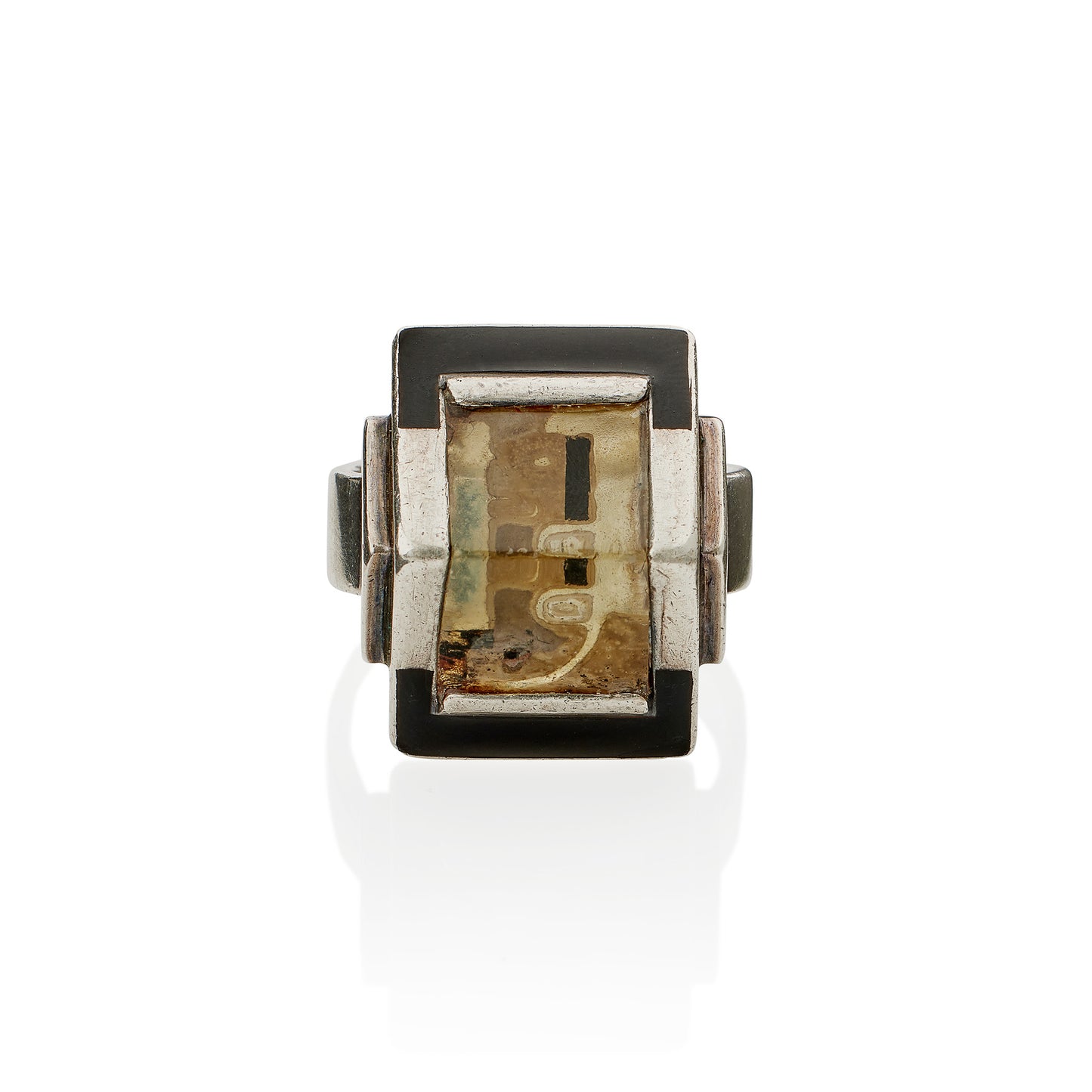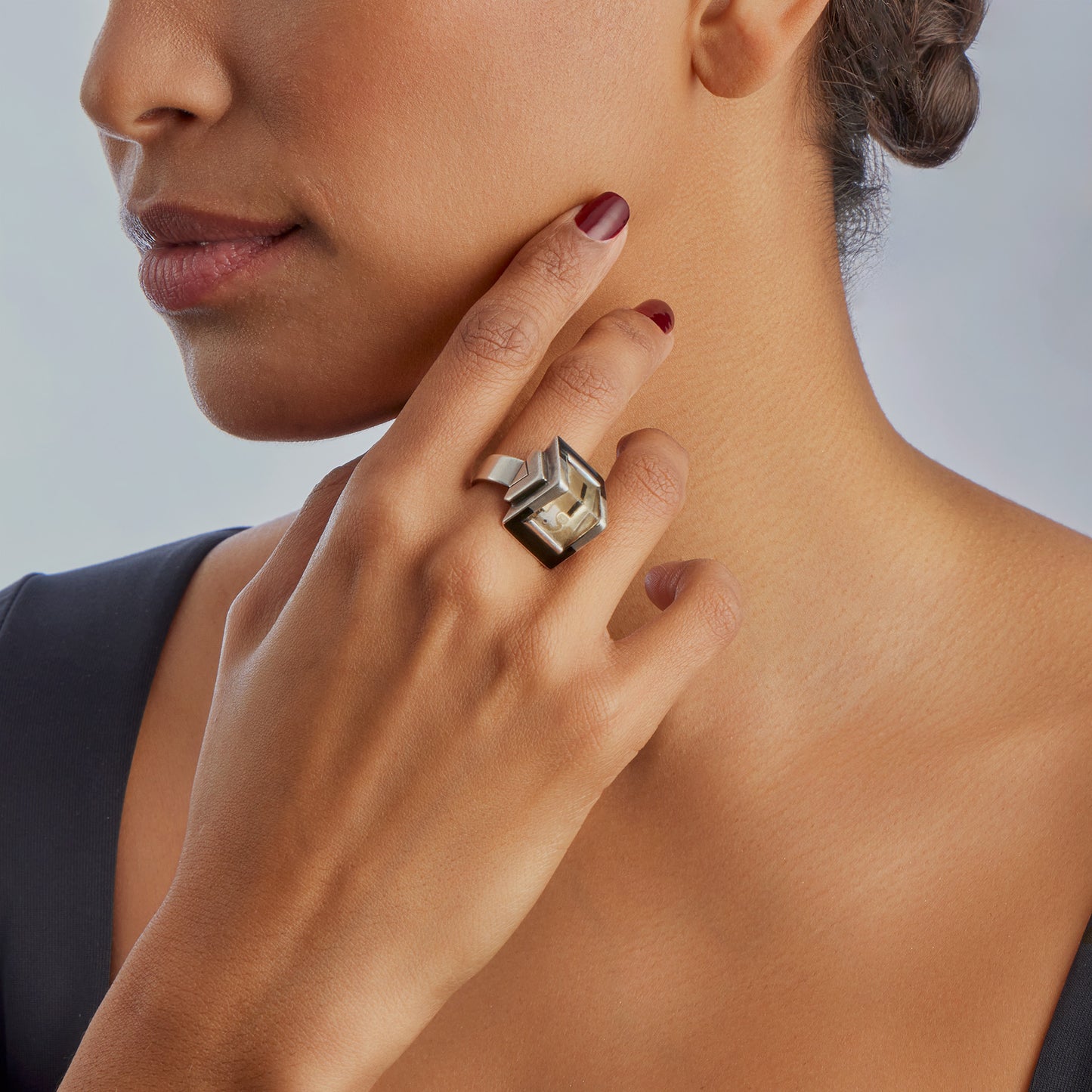This important ring is one of a small group of “Bijoux-Glaces” or “Mirror Jewels”. These jewels represent the collaboration between two French Modernist artists, Étienne Cournault (1891-1948) and Jean Després (1889-1980). Cournault was from Lorraine, and had been educated at L’Ecole de Nancy in graphic and applied arts. He was active in Paris as a painter, draughtsman, and print maker in the 1920s. Moreover, he was the premier practitioner of the rarified technique of reverse painting on crystal, which he elevated from a traditional decorative art by creating intriguing miniature paintings of Surrealist and Cubist inspiration.
Cournault met Després, an accomplished silversmith who moved in the circle of Modligiani, de Chirico, Braque and Signac, when Jacques Doucet commissioned the artists to complete an ornate metal table mounted by large reverse-painted glass sheets. Doucet, a prominent and influential couturier and vital patron of avant garde art, was a strict and demanding taskmaster who did not hesitate to request that artists remake their work before he would accept it into his collection. In the end, the monumental table was never delivered - Doucet died in 1929 before it was completed- but the two artists subsequently embarked on four year jewelry collaboration. They had in common their interest in mechanization, the dynamics of speed, and geometry. In their practice, they valued rigor in method, design and artistic conception. Both were fascinated by aviation. Després had served as an airplane mechanic and then as an engineering draftsman in World War I, while Cournault worked as an aviation illustrator.
After the war, from the mid 1920s, Després had begun designing and making jewelry in his family studio in Avallon, Bourgogne, but his austere work was received as radical even in Paris. In 1929, his submission of thirty pieces were rejected by jury of the Salon d’Automne. However, Després’ strong, spare forms combined with Cournault’s fascinating surrealist miniatures under glass won the acclaim of critics. The jewels also attracted the patronage of sophisticated and independent women, who loved the freedom that motoring and aviation represented. The two men designed and made a pendant for Jospehine Baker. The work Després and Cournault created stands in deliberate contrast to the contemporaneous creations of the dominant jewelers of the period - Cartier, Boucheron, Van Cleef & Arpels - who were designing with the opulent historic jewels of Mughal and Deccan India as their inspiration.
In parallel with the women working in independent studios, like Belperron and Boivin, the jewels produced in collaboration by Després and Cournault have a striking presence. In its industrial and architectural references, this ring, like those of Belperron and Boivin in this period, is also a “mini giant of volume”. At the same time, Cournault’s miniature painting, an artwork in its own right, presents poetic and mysterious shapes that may refer to some of his favorite subjects - a mask, an attenuated figure, or a fully abstract composition.
Like Després, Cournault’s work is represented at The Metropolitan Museum of Art and The British Museum. Mirror jewels are held in the collection of the Musée des Arts Decoratifs, Paris. A catalogue raisonné of Cournault’s engravings was published in 1991.





















